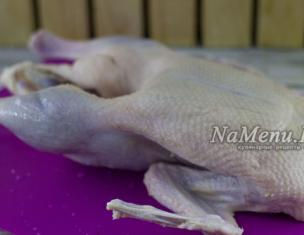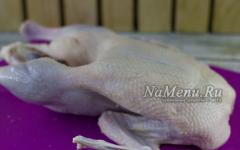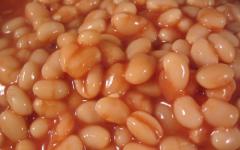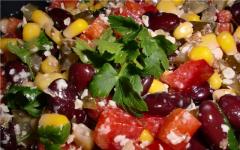Previously, housewives did seaming rather out of necessity. After all, the store shelves were intimidating with a small selection; only residents of the suburbs could boast of vegetable abundance. The city residents closely watched the market and if something was “thrown away,” they immediately snatched it up. Therefore, the concept of “urban jungle” justified itself.
They got literally everything, because many household items and products were in short supply. The situation worsened in winter, especially since winter in a sharply continental climate is long, meaning 4-5 months of cold weather. So people stocked up tomatoes and cucumbers for the winter, stored jam and sauerkraut to please themselves and their loved ones. Banks were taken out only on special occasions: holidays, arrival of guests.
Each time the hostess calculated the supplies so that there was enough. But the times of shortages are over, now there is plenty of everything! It seems like you no longer need to pickle cucumbers, lug bags of cabbage, or buy up tomatoes for wrappings. But the habits of thrifty people simply cannot be changed, especially since store-bought seams have their drawbacks.
For example, it would seem that the jar is transparent, everything is visible. But who knows what, besides the usual vegetables and spices, the manufacturers added there? After all, they need to maintain a marketable appearance, create a special taste so that the product is sold out. Of course, for salads, for one-time use, housewives take cucumbers and tomatoes in the form of rolls, but they cannot compare with homemade ones.
Pros of home supplies:
- Always nearby, especially the number of cans, their size is regulated by the hostess;
- There will be no problems with cucumbers, especially in winter, when their cost rises to almost astronomical heights;
- Rolling up jars is easy and doesn’t take long; most recipes are suitable even for inexperienced people;
- The canned product is completely safe, because we sealed it ourselves and saw everything. Moreover, you can do without vinegar.
Why assorted? Is it convenient to store two types of vegetables in one jar without wasting dishes? No, of course there are tomatoes for the winter, sealed separately. Cucumbers too. It’s just that when you combine them together, you get a special taste, familiar from childhood. Some people add a third neighbor to them - bell pepper, especially since it completely disappears from the shelves in winter. Others add hot pepper, while others experiment with the composition of greens. You can show your imagination and cook delicious ones.

What vegetables are suitable?
By the middle or end of summer (depending on the region), the shelves will be filled with tomatoes and cucumbers of the current season. Prices will fall and housewives will rush to fill their bins for assorted tomatoes and cucumbers for the winter. Here you should pay more attention to your choice, because when taking ten kilograms, the last thing you want is to get an unsatisfactory result.
Look for medium-sized cucumbers, let them be fresh and crispy. Then the preparations will turn out crispy. Look for tomatoes that are not overripe, but rather even underripe and dense. Also average.
Watch carefully when sellers pour from a bag or box. Some buyers choose their own vegetables, then it is less likely that you will be given overripe or even rotten ones.
The time of seaming is sometimes determined by the successful purchase of vegetables. You should not store them for a long time, even in the cold. It is better to choose a time to go to the market before the weekend or on the morning of the weekend to devote the day to sunset. Especially in the summer, when everything deteriorates much faster.
Banks
A housewife who loves seaming usually has a whole supply of different-sized cans. Previously, they were saved for years, then the collection was carefully stored, even when moving, they were taken away. For others, it is more convenient to store them in the garage or at the dacha; most store them on the mezzanine or balcony.
Which banks are better to choose? Here, look straight to the future: it’s better to eat any seaming quickly from the moment you open the jar; cucumbers and tomatoes for the winter, of course, won’t spoil instantly, but you shouldn’t leave them for weeks either. Therefore, most take a dozen small cans of 1, maximum 2 liters. Others like 3-5 large, 3 liter cans.

Craftsmen advise choosing jars with screw-on lids.
This is more convenient, they break less and are easier to close than simple glass ones. Especially if you are still an inexperienced seamer. Sometimes jars burst, unable to withstand the pressure; out of habit, you can screw the lid loosely, then the contents will simply deteriorate. Usually liter jars are taken for one-time use, opened and eaten.
Blank
The selected jars must be sterilized after washing, and then also treat the lids. Closing assorted cucumbers and tomatoes is quicker; you just need to wash them, cut off what you don’t need, and cover them whole. This reduces the seaming time.
Place all the jars selected for seaming on the table in a row to make it easier to reach each one. Place greens on the bottom of everything (recipes for the winter here vary, currently it’s dill and umbrellas). Trim off all the ends of the dill. Then pierce all the tomatoes through their stems with a toothpick and place them interspersed with the cucumbers on the dill until the jars are full.

Of course, the edges of cucumbers need to be trimmed. Then carefully pour boiling water into each jar up to the lid line. Cover them with your own covers and let them stand. It could be half an hour or even several hours. Then drain all the water from the jars into one pan, add sugar, then salt and boil.
When the jars contain 3 liters. quantity of spices: 3 large spoons each of salt and sugar.
2 l. jar - there will be 2 large spoons.
1 l. - one by one.
Peel a few cloves of garlic and place them in jars before the marinade is poured into them. Next come the seasonings: clove balls, peppercorns, then allspice.
Calculate garlic like this: 1 liter from a jar = 2-3 cloves, then 2-3 peas and black and allspice, 1 ball of cloves.
Boil the marinade water for 5 minutes, then remove and add vinegar (3 liters - a dessert spoon or a large tablespoon). If you decide not to overdo it with vinegar, you can add a little, but then store your jars in a dark and dry cellar.

That's it, the marinade and the jars themselves are ready, you can refill everything and close it immediately. Don't be alarmed when the lids get hot and tighten. To preserve the blanks, protect each jar with a plastic “hat” and attach it with a regular pharmaceutical rubber band.
This is what the actual preparation of a classic assortment looks like. In order for it to acquire its unique taste, let the jars brew for several days, then refrigerate them before serving.
What other greens can you take besides dill?
Dill tops (at dachas they grow beautifully with umbrellas);
Bay leaf (you can also dry it);
Garlic is a must;
Allspice peas;
Horseradish leaves (be careful, they have a strong taste, do not overdo it);
Celery;
Cherry green leaves;
Currant leaves;
Parsley.
However, every housewife chooses more by smell, wondering how all the spices will be combined later. There are a lot of plants at the dacha, especially in the summer everything blooms.
How to preserve if, in addition to cucumbers and tomatoes, there is a third main ingredient, for example, bell pepper? The principle of seaming will not change much; it is worth studying the recipes with photos. Before laying, it is better to cut the peppers in half or three so that they can accommodate more. And perhaps the correspondence of spices to the calculated liter of water will change. The pepper will give its own flavor; this type of roll will of course differ in taste.

In addition to pepper, you can add pieces of carrots or small cherry tomatoes, but here look at the chosen recipe. Moreover, it is easier to close Cherry in a liter or maximum 1.5 liter jar.
Capsicum should not be neglected, it will give it a spicy kick, but use it carefully. Most recipes suggest putting 1 pod if the jar is 3 liters.
Is everything compacted tightly? No. You can’t press too hard, because you don’t know how the vegetables will behave when the hot marinade is added. It is better to place tightly, without strong pressure, so that all the ingredients retain their shape. Sometimes you can see them swimming inside.
Should you only take large cans? Not necessary. It’s easier for the housewife to keep the choice; usually a batch of seams is 2-3 large, 2-3 medium (2 liters) and several small, liter jars. It doesn't matter what the intended content is.
Pickling cucumbers and tomatoes is a favorite pastime of Russians at the end of the summer season. It is at this time that zealous housewives try to replenish their supplies of canned vegetables in order to delight their loved ones with original snacks and salads all year round. From our article you will learn how to do it correctly. The recipes are quite simple and you can easily cope with them.
Assorted vegetables “Summer in jars”
Vegetables prepared according to our recipe will help you out more than once in a variety of situations. With their help, you can prepare a delicious salad or serve them as an independent snack for the holiday table. How to prepare assorted pickling:
- Sort the cucumbers and tomatoes, wash and keep in clean water for half an hour.
- Sterilize liter jars in the oven or over a boiling kettle.
- When the container has cooled, place dill umbrellas, bay leaves and allspice peas on the bottom.
- Place the vegetables in jars, add three or four cloves of garlic to each of them, pour boiling water over them and let sit for half an hour.
- When the specified time has elapsed, drain the water into the pan and prepare the marinade. For one and a half liters of liquid, add two tablespoons of salt and four tablespoons of sugar.
- Place the pan on the fire and bring the water to a boil. After this, remove it from the stove and pour in 20 grams of vinegar.
- Mix the marinade and pour it into jars.

Screw on the dishes with sterilized lids, turn them over and wrap them in blankets at night. After this, place the jars in a cool place.
Pickling cucumbers and tomatoes for the winter
How nice it is to open a jar of canned vegetables prepared with your own hands in winter! Such a treat is in no way inferior in taste to factory-made preparations, and often surpasses them in all respects. Below is a recipe for assorted pickling.
- Wash a medium-sized bowl and soak in cold water for one hour. After this, wipe them again with a sponge and remove the stalks.
- Pour water into a large saucepan and place it on the stove.
- Place dill umbrellas, celery leaves, garlic cloves, bay leaves, sweet peas, and one horseradish leaf at the bottom of sterilized jars.
- Place the vegetables in the prepared container - place the cucumbers “standing” and place the tomatoes on top. If you wish, you can put whole or cut squash between them.
- Fill the jars with boiling water to the very top, let them stand for five minutes, and then pour the liquid back into the pan.
- To prepare the brine, add two tablespoons of salt and three tablespoons of sugar per three liters of water to the drained water.
- Bring the water to a boil, turn off the heat and pour two teaspoons of 70% vinegar into it (also for three liters of water).
- Pour the marinade into the jars, screw each with a metal lid using a special seaming machine, turn it over and cover with a fur coat.

Pickling cucumbers and tomatoes in this way allows you to store vegetables for two years and practically eliminates their souring.
Salt cucumbers and tomatoes together
If you like salted vegetables, then pay attention to this recipe. With its help, you can quickly prepare your favorite savory treat and safely store it for a whole year. Pickling cucumbers and tomatoes in jars is carried out as follows:
- Sort and wash the vegetables. Cut large cucumbers in half, make cuts in the tomatoes around the stalk and place garlic and chopped herbs inside. Peel the carrots and cut into rings, cut the onion into rings, and cut the sweet pepper into slices.
- Place the vegetables in a jar in layers, then pour boiling water over them and let sit for five minutes. After this, the water should be poured into a suitable pan.
- For the marinade, you will need to take a tablespoon of coarse salt, two tablespoons of sugar and one and a half vinegar per liter of water (we will add it at the very end). Bring the liquid to a boil and then pour it back into the jars.

Cover the vegetables with clean lids, let them stand for 20 minutes, and then roll up. Keep the assortment upside down and covered with a blanket until it cools down.
Salting for the winter
In this recipe we will tell you how to make them acquire a special taste and unique aroma. Read how to pickle cucumbers and tomatoes and get down to business with us.
- Sort, wash and soak the cucumbers in clean water for a couple of hours. Wash the tomatoes and use a toothpick to make several punctures near the stem.
- Cut the hot pepper and horseradish root into small pieces.
- Peel the carrots and cut into rings.
- Process the sweet pepper, cut into several pieces and remove the seeds.
- Separate the cauliflower into florets.
- Wash the cucumbers again and cut off the ends with a knife.
- Boil the required amount of water and dissolve salt in it (one tablespoon is enough for one liter).
- Place the prepared vegetables in layers in three-liter jars, adding garlic and a stalk of celery.
- Pour boiling water over the assortment, cover with sterilized lids and put in a place where they will not interfere.
- On the evening of the third day, drain the water from the jars into a suitable pan. For convenience, secure a piece of gauze to the lid using an ordinary rubber band.
- Add a little more liquid and salt to the pan (half a teaspoon per liter).
- Boil the brine and pour it into the jars.

Cover the assortment with newly pasteurized lids and turn it over until it cools. Prepared vegetables turn out very tasty and crispy, so they are a great addition to any meat, fish or poultry dishes in winter.
- For pickling, use only special varieties of cucumbers with thin skin.
- Do not forget that pickling cucumbers and tomatoes is a creative process, and you can always change the composition of the assortment to your liking. For example, you can add beans or pieces of eggplant to these vegetables.
- Standard spices for pickling are dill, garlic, horseradish root, as well as currant, cherry or oak leaves.
Conclusion
We hope that you find the recipes we described in our article useful. Cook with pleasure and delight your loved ones with new dishes.
Each housewife can pickle cucumbers and tomatoes separately. Everyone is familiar with crispy cucumbers in winter and salty tomatoes, which go perfectly with potatoes or other dishes. But you can also prepare wonderful assorted dishes, which will turn out to be no less amazing and appetizing, and will also save space on your pantry shelf. Here's how to prepare assorted cucumbers and tomatoes for the winter, the most delicious recipe and several other variations. But before you start cooking, you need to know which vegetables are exactly right for you to cook and how to choose them correctly.
Subtleties of choice
If you are preparing assorted cucumbers, you need to choose fruits that are firm, not limp, dark and with pimples. The cucumber should not be empty inside, without a large number of seeds. And you need to make preparations almost immediately after cooking, otherwise you risk ruining the taste of the finished product.

To select tomatoes for the winter, you need to choose ones that are elastic, without damage, and small or medium in size. The best are considered yellow or red cherry tomatoes, which are ideally combined with various foods.
Assorted cucumbers and tomatoes for a liter jar and a 3-liter jar
They are different, depending on specific products and the tastes are different. But there is one recipe in which you can prepare delicious cucumbers and tomatoes along with other ingredients. Here's what you can do for the winter so you can enjoy delicious summer vegetables.

So, the basic recipe. In order to make tasty cucumbers and tomatoes in jars you need to take:
Half a kilogram of small cucumbers;
- 400 grams of small red tomatoes;
- 6 peppercorns;
- 3 dill umbrellas;
- 6 large cloves of garlic;
- 6 bay leaves;
- a liter or one and a half liters of water, depending on the main volume;
- 2 tablespoons of coarse salt;
- 2 tablespoons of vinegar 9%;
- 2 tablespoons of sugar.
Before cooking, you need to carefully sort the vegetables. In order for the prepared products to really turn out tasty, you need to pick the cucumbers in the morning and then put them in cold water for 4 hours, after cutting off the butts and ends so that the bitterness, if any, comes out. Then, when you add assorted cucumbers, they will turn out crispy and will not become bitter. You can also prepare them not only for 3 jars, but also for 1. If the vegetables are large, then you will need not a liter of water, but one and a half. In this recipe for preparing cucumbers for the winter, it is not necessary to strictly follow the proportions. The main thing is that the products are of high quality and the jars are properly sterilized.

After the vegetables have been prepared, you need to drain the water and dry the cucumbers and tomatoes with a towel. Remove soft and rotten vegetables immediately. Then we peel the garlic and wash the dill umbrellas in water. We sterilize the jars along with the lids by placing them over hot steam, but without enclosing the space so that the glass does not crack.
Then prepare the brine. To do this, mix sugar, salt and vinegar and put on fire until it boils. First put garlic and dill in sterilized jars, then vegetables. Fill with hot brine and turn over, wrapping it in something warm. When the jars have cooled, they are placed in the pantry. In winter, you get a nice assortment of tomatoes and cucumbers that will appeal to all marinade lovers.
Vegetables for the winter can turn out surprisingly tasty if you prepare them according to the following recipes.
This recipe will appeal to lovers of green tomatoes and delicious tomatoes.

The recipe turns out moderately spicy and piquant. To do it, you need to take:
1 liter of water;
- a head of garlic with large cloves;
- red sweet bell pepper;
- 2 pods of chili pepper;
- 3 dill umbrellas;
- 4 cherry leaves;
- 2 tablespoons of salt;
- the same amount of sugar;
- 2 tablespoons of wine vinegar;
- 500 grams of green tomatoes without damage;
- the same number of cucumbers with pimples suitable for pickling.
The cucumbers need to be carefully sorted and placed in cold water for 4 hours, cutting off the butts. Sort the tomatoes, leaving only the fruits without damage. Peel the garlic, mix with dill, chili pepper, cherry leaves. Finely chop the bell pepper and add to the marinade mixture.
Then sterilize the jars with steam, put clean vegetables, garlic, pepper and dill on the bottom. Then boil water with salt, vinegar and sugar. Pour it over the cucumbers, roll up the jars and after they have cooled, put everything in the pantry.
Pickled cucumbers prepared according to this recipe turn out very tasty, and winter tomatoes are very spicy, thanks to pepper. Also, instead of chili pepper, you can add a pod of regular hot pepper or a little ground red pepper to each jar. It is best to pickle small cucumbers, as they turn out crispy and tangy.
And here is another recipe with pepper that will appeal to those who like various assorted options.
Here are some recipes with photos that will allow you to prepare fragrant preparations for the winter. 
To start making this recipe, you will need black peppercorns. For preparation you need the following components:
A kilogram of large grapes;
- 600 grams of onions;
- 3 kilograms of yellow tomatoes;
- a spoonful of salt and vinegar;
- 2 tablespoons of sugar.
Rinse tomatoes and grapes under warm water. The grapes need to be separated from the branches. Cut the onions into 4 parts. Sterilize the jars and layer onions, grapes and tomatoes along with a small amount of black pepper. For additional shades of taste, you can add a dill umbrella and a cherry leaf to a liter bottle. Roll up the jars, put them in a warm place to cool, then put them in the pantry. Grapes and tomatoes go well together, and it turns out very tasty, but there is another recipe with peppers and tomatoes.
Another easy recipe that lovers of tomatoes and sweet peppers will love. You need to prepare it like this:
500 grams of long cucumbers;
- the same amount of tomatoes;
- bell pepper;
- 3 black peas and the same amount of allspice;
- 3 cloves of garlic (more is possible for those who like it spicy);
- a third of capsicum;
- small onion;
- Bay leaf;
- liter of water;
- 2 tablespoons of sugar;
- 1 spoon of salt;
- the same amount of vinegar.
Rinse the jars with soda and sterilize them in the oven. Then cut the cucumbers into quarters lengthwise. Cut the bell pepper in the same way, removing the seeds. First put an onion, capsicum, cucumbers with bell peppers, tomatoes, and bay leaves into each container. Boil water with the marinade - salt, sugar and vinegar, roll up the jars and put them in a warm place. Then cool and store in the pantry. This recipe is moderately spicy and goes well with various foods, especially hot potatoes or mashed potatoes.

For this recipe with tomatoes for the winter, sterilization is not needed. Here's what you need to get started canning them right now:
500 grams of elastic tomatoes and cucumbers;
- 4 dill umbrellas;
- a few horseradish leaves;
- a head of garlic;
- a bay leaf for each jar;
- 2 tablespoons of vinegar;
- 2 black peppercorns for each jar.
Rinse vegetables, garlic, horseradish and dill. First place the horseradish, garlic and dill with bay leaf on the bottom of the jar, place the cucumbers vertically, and place one or more tomatoes on top, depending on the capacity. Then fill everything with water with the addition of salt, vinegar and sugar, after boiling it. After this, put the jars in a warm place and, when they have cooled, put them in the pantry. Tomatoes and cucumbers preserved in this way will turn out moderately spicy and crispy.
Of course, these are not all winter recipes.
Autumn is in full swing, it's time to stock up on preserves - in winter, how great it will be to eat fried potatoes with a crispy cucumber or sweet and sour tomato!
And if so, you will have to persuade your laziness to be patient a little for a while: like, but in winter you won’t have to run to the store for ketchup rich in stabilizers and GMOs, half-decayed mushrooms with sand crunchy on your teeth, or completely inedible gherkins. But since laziness is a harmful and stubborn lady, we will, as always, preserve it with minimal effort and time - so as not to irritate it again.
Ingredients for a 3L jar
- Tomatoes or cucumbers - 2 - 2.5 kg (depending on the size of the vegetables);
- Garlic - 1-2 heads;
- Salt - 2 tbsp. l with a small slide;
- Sugar - 4 tablespoons with a large slide;
- Vinegar - 3 tbsp.
- dill and other spices - to taste and availability
Cooking method
Step 1
Wash 3-liter jars with clean water. Why they don’t need to be sterilized, I already wrote in. We put spices in a jar: the basic composition is dill (the more the better), garlic (about a head for each jar), peppercorns (as many as you like). The rest can be added at your own discretion: leaves of horseradish, cherry, oak, currant, etc. Or you don’t have to add it, which is what I most often do. And yes: tomatoes turn out much tastier with dry dill along with seeds, cucumbers - only with green ones. If you have both in one jar, it’s better to put green.
Step2
Place the washed vegetables in a jar and add dill on top again. Boil water and pour into jars. Cover with pre-scalded lids and you are free for the next 15 - 30 minutes. You can lie down after so much work, you can replenish your strength with delicious food, quickly prepared according to my recipes, you can... and you can do a lot of things! 
Step3
Why such a difference in time? It's very simple: we wait until our jars cool down to such a temperature that we can handle them without getting burned. When the heat is up to 40, it will take a long time for them to cool down; if it’s already cold, they’ll finish in about 15 minutes. Then pour the water into a saucepan, add 2 heaped tablespoons of salt, 4 - 5 tablespoons of sugar (this is all for each jar) and set to boil. When the water is already boiling, add 3 - 4 tablespoons of vinegar and immediately fill and seal the jars.
Step4
Then we turn them upside down, wrap them up, and this is where the mockery of laziness ends: you can sleep, watch TV, or reward yourself with a trip to a cafe with a clear conscience. Oh yes: you still have to rinse the pan and tidy up the kitchen a little - but what to do? We haven't earned money for a housekeeper yet...
Every amateur gardener knows that growing tomatoes in close proximity to cucumbers is not recommended. These plants are antagonists. Each vegetable needs its own bed. But when salted or pickled, tomatoes go well with cucumbers. Of course, there are strict guardians of the canons who even serve these pickles on different plates. I propose to boldly break any canons and create, create new combinations of products and tastes. Take ripe tomatoes and cucumbers and wash them.
Regular glass jars with a capacity of 3 liters should be washed well. After this, they need to be rinsed with boiling water and allowed to drain. We fill the jars with cucumbers and tomatoes in a ratio of 50 to 50. This pickling is done for a long time, so no cutting of cucumbers or piercing of tomatoes is done.

From this moment on, the paths of all winter pickle purveyors diverge. Everyone has their own traditions and tastes. Some people put 5 tablespoons of sugar per 3 liters in cucumbers (in addition to salt) and drain and boil the brine 5 times, pouring it back into the jars. Here is a recipe for lazy people. Like me. To pickle vegetables you cannot do without salt and sugar - this is understandable. We also need a little vinegar, fresh or dried dill with umbrellas, cloves (2 pieces per jar), 2-3 peas of allspice, a couple of cloves of garlic, bay leaf and coriander on the tip of a knife. Garlic and dill are the main sources of aroma and taste of all such preparations. Doses of all spices should be minimal. One extra clove can ruin the whole taste.

Add halved garlic and all other spices, except dill sprigs with inflorescences (umbrellas), to the jars with cucumbers and tomatoes. You can add currant leaf and some horseradish leaves.

Next begins the “deadly act” for lovers of precise doses and cooking marinades. We take an ordinary clean tablespoon and pour two tablespoons with the top of salt and the same amount of sugar into each jar. That's all. No weighing or calculations of marinade volume per 1 jar of vegetables...

We plug the jars with washed sprigs (inflorescences) of fresh dill, trying to ensure that they do not protrude over the edge of the jar. Add one tablespoon of the cheapest 9% food grade vinegar essence to each jar.

Carefully pour boiling water into the jars. And close them with lids. The photo shows that the salt has not completely dissolved; even more salt and sugar have settled to the bottom of the jars. It’s okay, take a towel and, pressing the lid to the jar, turn the jar over 3-4 times. All the salt and all the sugar will dissolve in seconds. Leave the jars at room temperature to cool for 8 hours. Then you can remove the lids and add boiling water to the top of the jars. We finally close or roll up the jars and put them in a cold and dark place. Homemade pickling - assorted tomatoes and cucumbers is ready. Or rather, it will be ready for use in three months.










